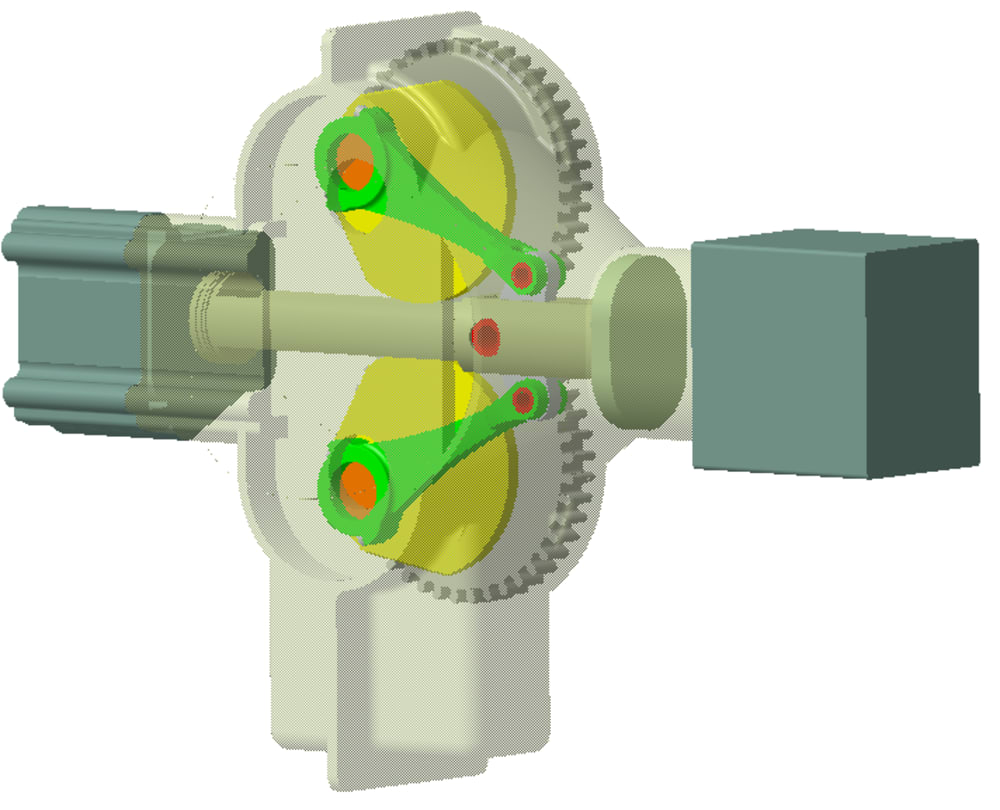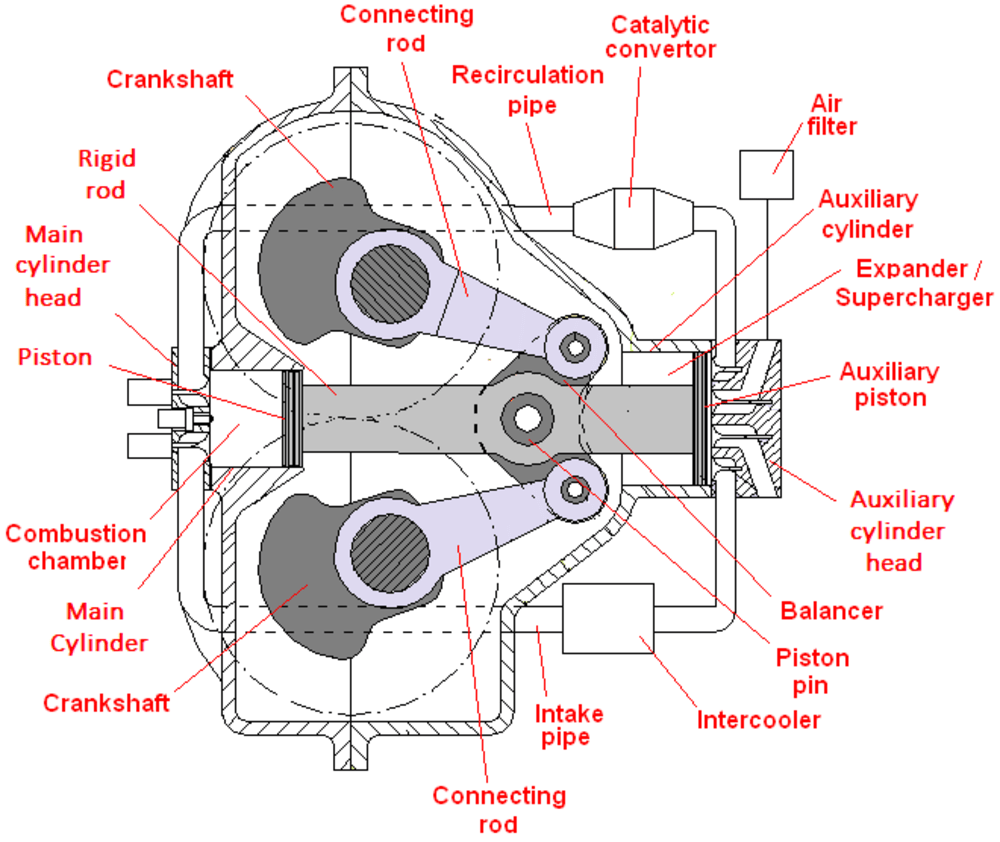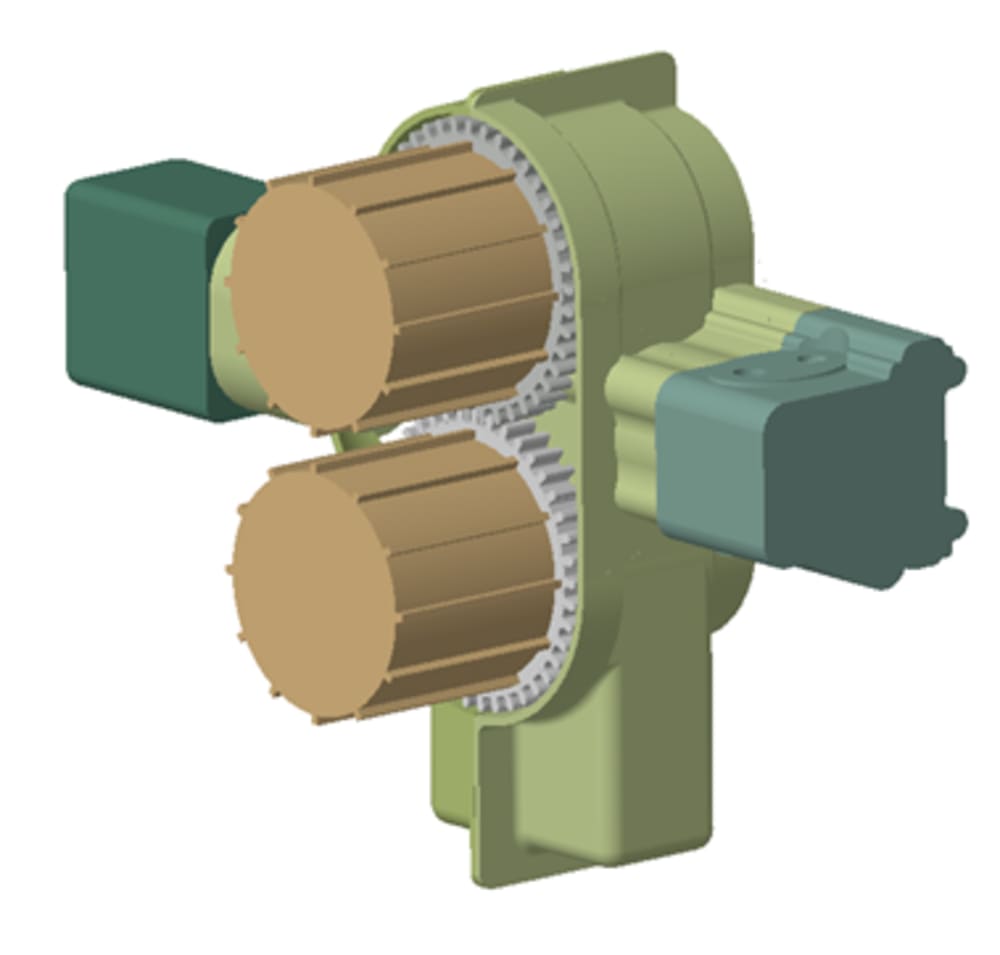
Currently, by recovering the energy of the exhaust gases the advanced Internal Combustion Engines used in car racing have already managed to reach over 50% total effective efficiency (equal with fuel cell efficiency). However, in order to achieve this level of efficiency the engines have to use an external recovery system attached to the engine block.
In order to mitigate this drawback, the main objective of the presented prime mover concept is to develop novel, high specific power and energy, cost-effective technology for the conversion of chemical energy into electric power for use in electrified powertrains for terrestrial or aerial vehicles.
RECOVER is a four stroke double crankshaft engine with internal heat recovery. The engine uses a tandem piston system, the main piston hosted by the main cylinder and the auxiliary piston hosted by the auxiliary piston the bore of the auxiliary cylinder is substantially bigger than the bore of the main cylinder. The main piston and the auxiliary piston are connected by a rigid rod. The rod has a balancer fitted with a piston pin. The balancer has on both ends a joint with a connecting rod as shown in figure. Each connecting rod rotates a crankshaft. The two crankshafts are synchronized by two gears. The main cylinder is closed by a cylinder head having the standard function. The cylinder head contains the intake valve and exhaust valves, activated mechanically or in any other manner. The intake valve controls an intake pipe. The exhaust valve controls a recirculation pipe. The auxiliary cylinder is closed by a cylinder head. The auxiliary cylinder head contains an intake valve for the recirculated exhaust gas from the main cylinder, an exhaust valve for the exhaust gas recirculated in the auxiliary cylinder, an intake valve for the fresh air and a transfer valve for pressured air.
The RECOVER engine can match the fuel cell efficiency of 40—50% without using for its manufacturing expensive, precious metals, the fuel cell being considered until now the technology of the future.
RECOVER could use Carbon Neutral Fuels, including Hydrogen in order to reduce drastically the global emission level of the transportation sector.
In its application to an electric-hybrid CTOL/VTOL aircraft, the two-crankshaft configuration allows the use of two electric generators in the simplest manner, offering an increased redundancy level of the propulsion system.
The advantages of the RECOVER range extender:
- Highest power density due to ultra-high compression ratio combined with the double useful stroke
- Reduced CO2 level when uses conventional fossil fuels;
- Compensation of all rotating inertial forces;
- Very low vibration caused by torque impulses on the engine assembly and the driven systems
- Very low friction losses from the piston - connecting rod-cylinder assembly, the side force acting on the piston being canceled by the two connected rods.
- The use of large swept volumes with better thermodynamic efficiency;
- Low fuel consumption
- Significant reduction in production cost
- Scalable from 50 kW to 1 MW power level;
- Reduced noise level.
Video
-
Awards
-
 2020 Top 100 Entries
2020 Top 100 Entries
Like this entry?
-
About the Entrant
- Name:Liviu Giurca
- Type of entry:teamTeam members:Liviu Giurca, Michael Soimar
- Software used for this entry:Catia V5
- Patent status:patented








